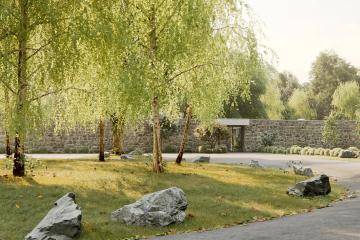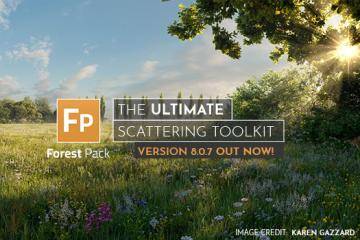Nouvelles
Lisez les derniers développements d'ITOOSOFT


Introduction to Makuta VFX
Makuta was established in April 2010 and in the short time that followed they have worked on 14 features plus several commercials and pieces for the private sector.
As with any company, their success relies on a talented team. Division Head and Chief Technical Director Pete Draper is a visual effects veteran from the UK who has been working within the CG industry for almost two decades with previous roles as Lead and Senior Artist, Head of Media and Director of Visual Effects within studios in the UK and abroad. He's well known amongst 3ds Max users for his commitment to education and his many publications.
Adel Adili, VFX Creative Director, has worked within the Indian Film Industry for over seven years, Adel first studied fine art and completed his BA studies at university, however from the start of the CG era he involved himself heavily in CG and visual effects. Our VFX studio lead, Dorababu Achanta is an invaluable asset to the company also, he’s been with us from our very start, and leads the company forward from project to project.
Of course a project of this size would never have been possible without a team of artists who worked tirelessly around the clock for months on end to get the shots finished and polished to the amazing standard you see in the cinema. One senior artist in particular, Subhrojyoti Banerjee (Joe for short), pointed management in the direction of Forest Pack Pro and led the team in exploiting it to its best ability.
We talked to Makuta about their exceptional work on Baahubali - The Beginning, the first part of an epic story that's steeped in legend. Baahubali: The Conclusion is scheduled to follow next year.
How did you get involved in Baahubali?
The director, SS Rajamouli has always had a close connection with Makuta (he was initially on our board of directors) and have worked with him on several of his films. At the time of finishing Eega, SS Rajamouli was already in development for Baahubali and so right from the very kernels of conception, we were involved in developing the visual look of the film.
What's the history of the studio? What are the Makuta VFX's or your artist's previous achievements, I know for example that you won awards for Eega (despite a fly phobia) and Magadheera?
SS Rajamouli’s previous film to Baahubali, was Eega (Telagu title) / Makkhi (Hindi title), which was a huge success both with audiences and critics. In addition to several other awards we won for our work on Eega and the founder(s) also won the National Award for a previous film we worked on called ‘Magadheera’… We’re hoping Baahubali can continue this trend, and provide us with a bit more silverware…!
Introduction to Baahubali - India's most expensive feature film
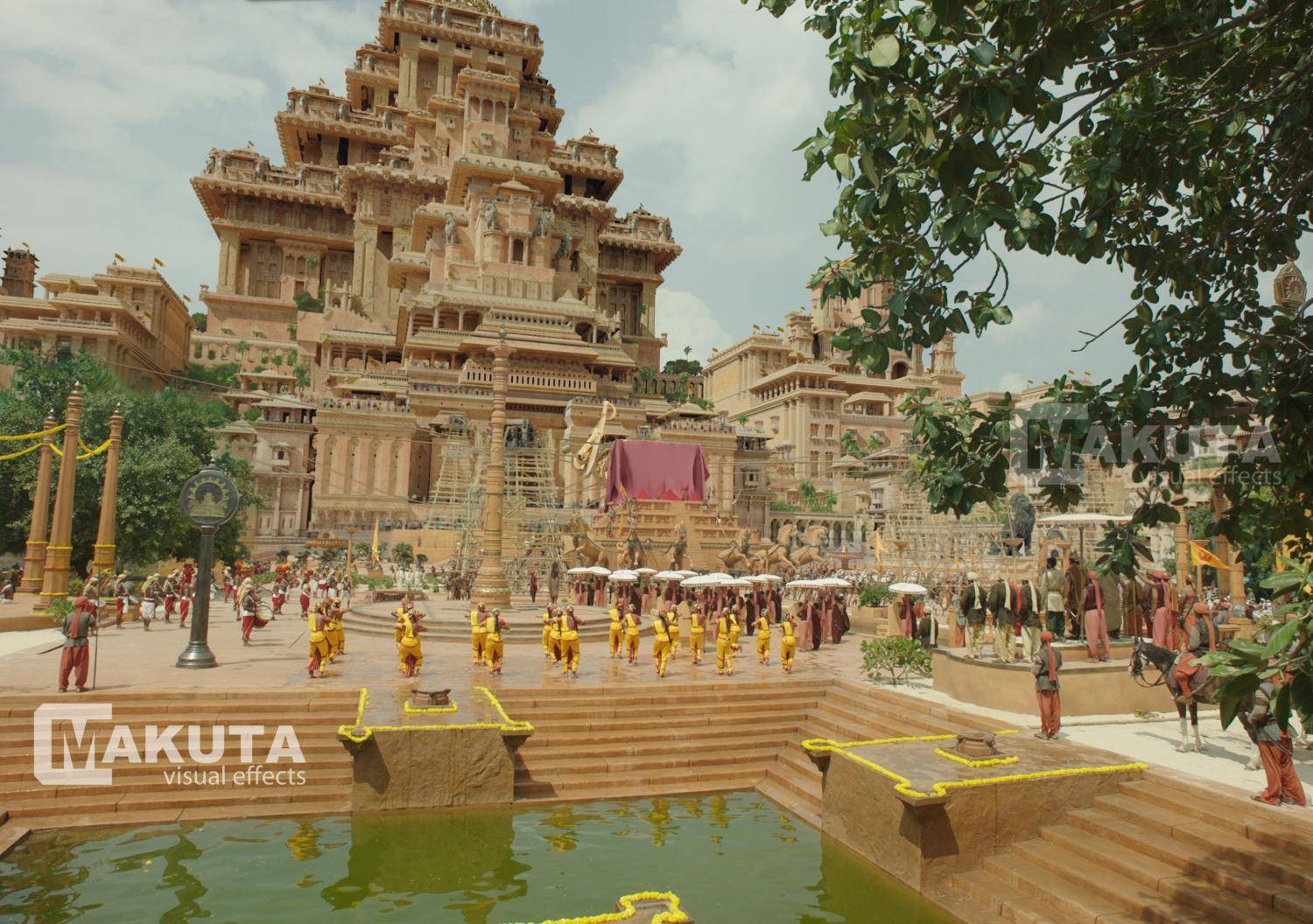
What makes this project unique from our industry's point of view?
Primarily it has to be the scale of Baahubali that makes it unique. Not only in the number of characters, environments and sets you see on screen but the physical size of them and the sheer number of shots therein.
The waterfall sequence totaled over 150 shots. Our main aim with the waterfall was to create a series of shots that was to be the benchmark of quality for any future project worldwide wanting a waterfall in a scene. We like to think we’ve achieved this goal and that Baahubali will be the go-to reference for anyone wanting to do similar in the future and years to come!
The Maheshmati City is a monster! The sheer size of this city is something never seen in Indian film previously. Even Hollywood movies that have CG cities in them (Inception for example) have created modern skyscraper filled cities, nothing like the amount of detail that was required within Maheshmati with the level of detail required in the model work.
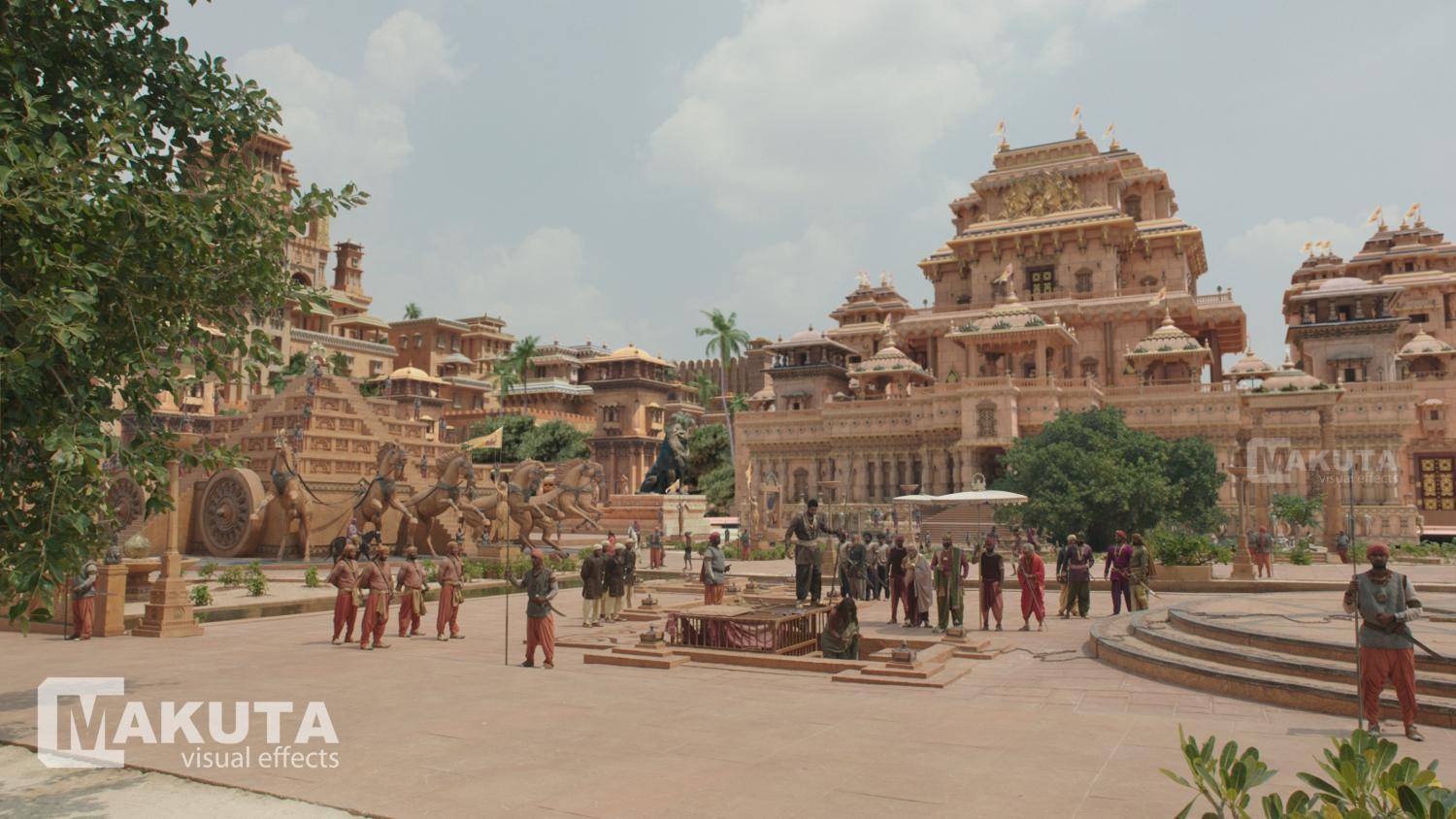
How long have you been working on this project and what were the milestones?
We started over two to three years back with concept works for the waterfalls and developing the Kings Court interior shots. Based around the shooting schedule our milestones were, in sequence, King’s Court, the Waterfall sequences, the ‘Tarzan Sequence’, and finally the Maheshmati Palaces and surrounding city; all with the exception of the King’s Court utilized Forest Pack Pro.
Baahubali is touted as the most expensive film in Indian history, but with a budget reported at $40 million it's still a fraction of a Hollywood production's. What do you think it the secret to delivering breathtaking VFX cost-effectively?
There are several obvious differences with the Indian Film industry and Hollywood. Financially the running costs of a company in India is a lot cheaper than overseas, so immediately overheads are lower and so that saving is passed onto the film makers.
In terms of using the money and time we do receive to work on a project effectively, a lot of it comes down to planning. We were having dailies with production team members and/or the Director to ensure we were constantly on track. This meant a lot less time was spent working on non required elements which would push the cost of the film up and also the time required to work on it.
Key Scenes
Looking at the scenes we worked on for Baahubali, you can breakdown the work into 4 main areas: The Waterfall Sequences; the ‘Tarzan sequence’ the Mahesmati City, and The Mahesmati central Palace. Each of these areas provided their own unique challenges and hurdles for us to overcome.
The Waterfall sequence
Here, our primary goal was to present the sheer awesomeness of the scale of the waterfalls to the audience. At a height of over 1.5km tall, and consisting of a wide array of falls of different styles and strengths to add depth, this was a huge challenge. And of course it wasn’t just water, The entire falls set had to sit amidst lush green mountains and dense foliage and vegetation.
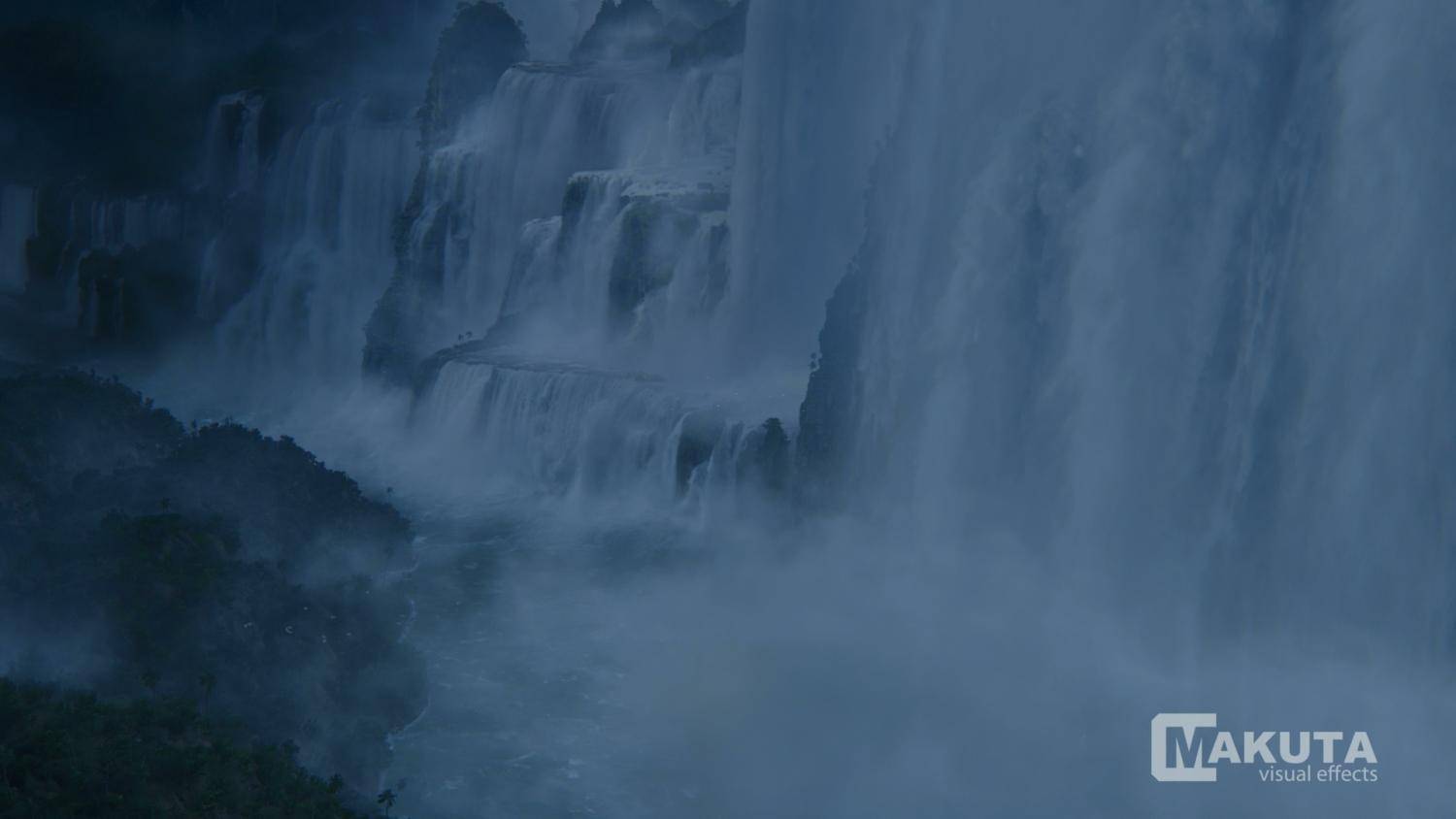
For each shot we had around 4 different versions of concept art. The director would guide us with his comments, adding a bit more water here, a tree there, removing a rock there for example and once approved was passed to modelling. Our concept team here are all amazing artists and are always challenging our 3D artists in recreating their concepts in a virtual world. A key point the director raised was to ensure that all the plant life we used had to be native to India. We had to choose very carefully on what we were using and showcasing.
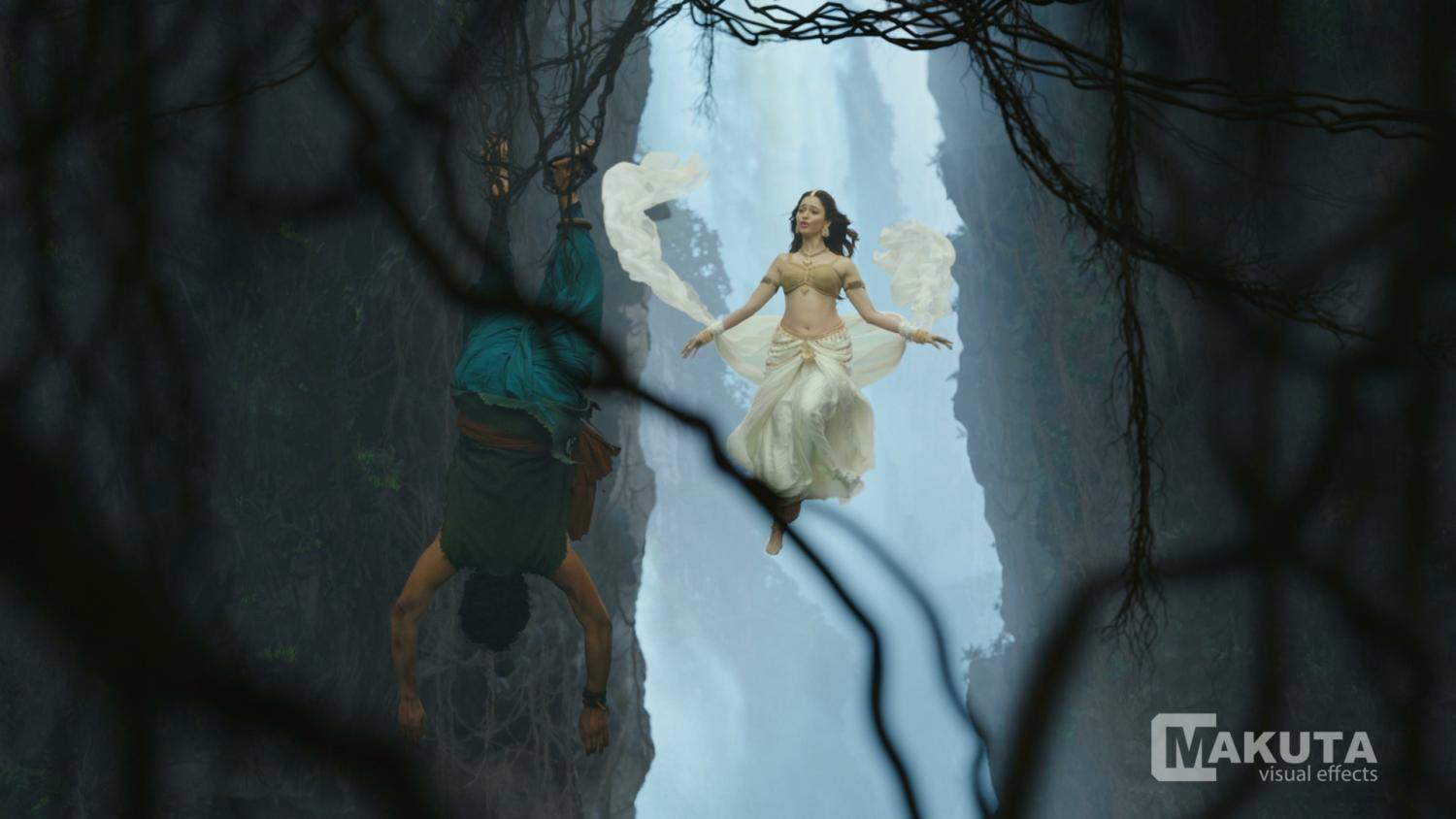
For both Waterfall and Tarzan sequences it was not just a case of placing a big waterfall here, some rocks over there, and then filling up the gaps with trees and shrubs... almost 4 months were spent conceptualising how these areas would look. We looked at each shot individually and focused on the aesthetics, ensuring it would seem not only natural but also dramatic and beautiful to the audience. We kept continuity in mind, but chose wisely as not to compromise on the final aesthetic.
The Tarzan Sequence
Though technically part of the waterfall environment, due to the unique look and feel we were required to create compared to the other sequences, the ‘Tarzan Sequence’ was treated as a separate entity in studio. As it’s name suggests, the sequences is set within a thick vibrant jungle. It had to be packed with huge trees, vines, a multitude of vegetation and thick carpets of moss, all carefully laid out to provide the best possible aesthetic composition. Although the number of shots in this sequence was a lot less than others, due to the sheer volume of detail required, this proved to be one of the most challenging sequences for us in the entire feature.
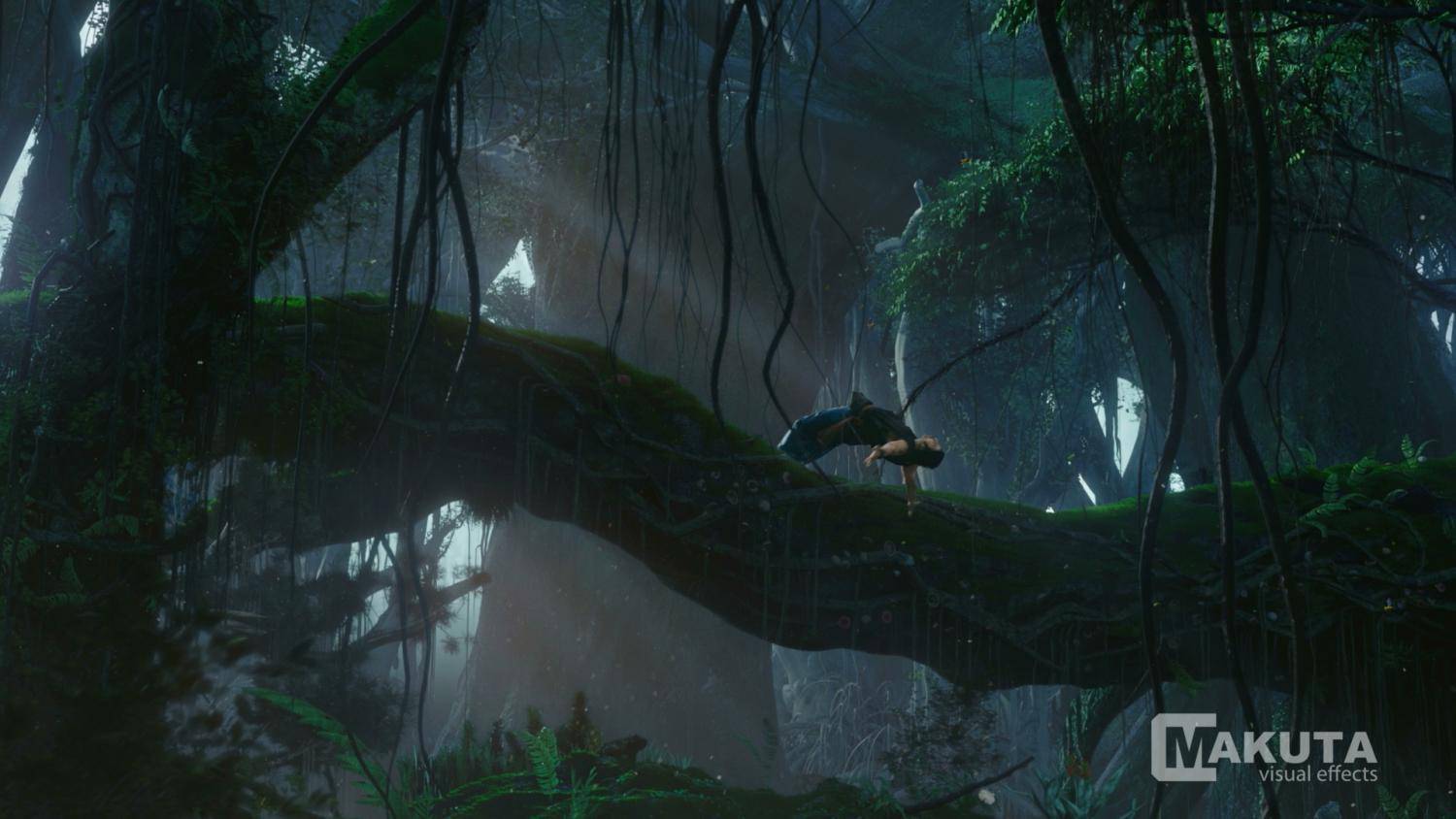
For both Waterfall and Tarzan sequences it was not just a case of placing a big waterfall here, some rocks over there, and then filling up the gaps with trees and shrubs... almost 4 months were spent conceptualising how these areas would look. We looked at each shot individually and focused on the aesthetics, ensuring it would seem not only natural but also dramatic and beautiful to the audience. We kept continuity in mind, but chose wisely as not to compromise on the final aesthetic.
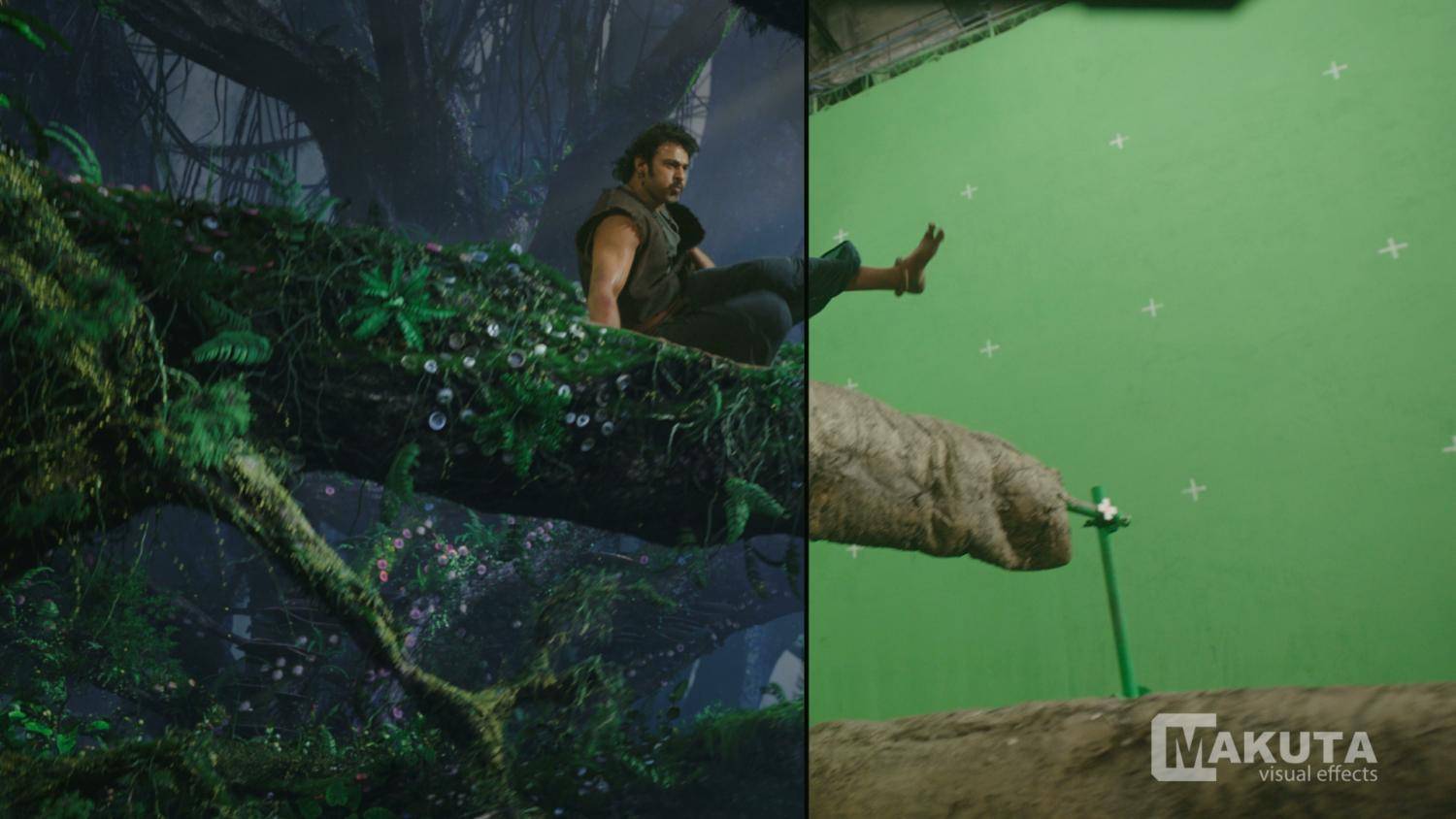
Forest Pack was the ideal choice when it came to creating the jungle. We started by creating all of the base structures; from the detailed branches in the foreground to the gnarly trees at the back. From there we turned to it. We really loved the parameters that Forest Pack made available to us and everything just seemed so intuitive to the user. For example, when we covered a branch with moss, we could control the direction, angle and elevation of growth. This level of control resulted in a very natural feel to our output. From there, we went ahead and populated up shots with wild mushrooms, shrubs etc. We used numerous complex distribution maps to specify areas where we wanted a certain plant to grow or place specific items which would complement the shot.
Mahesmati City
This was not just any city. At 10km long and 6km wide, this city is the size of San Marino! We had worked on a large scale city previously in a film called Maghadeera, but for that project we only had to work on certain areas within the city, and the city in its entirety was 1/8 of the area of Maheshmati. We were initially daunted by the sheer number of houses, buildings, palaces, statues, schools, markets, factories, mills, canals, arenas, temples and towers that had to be created and laid out logically. And of course within the city there also has to be people of various class, standing and job description, horses, carts, elephants, camels, and birds. And amongst all of this and then out further into the surrounding area had to be a multitude of green forests, gardens, palm trees, parks, gardens, flowers, shrubs and a ton of other things that the director asked us to create. All of this was surrounded by rocky mountains and big river; this indeed was a challenge.
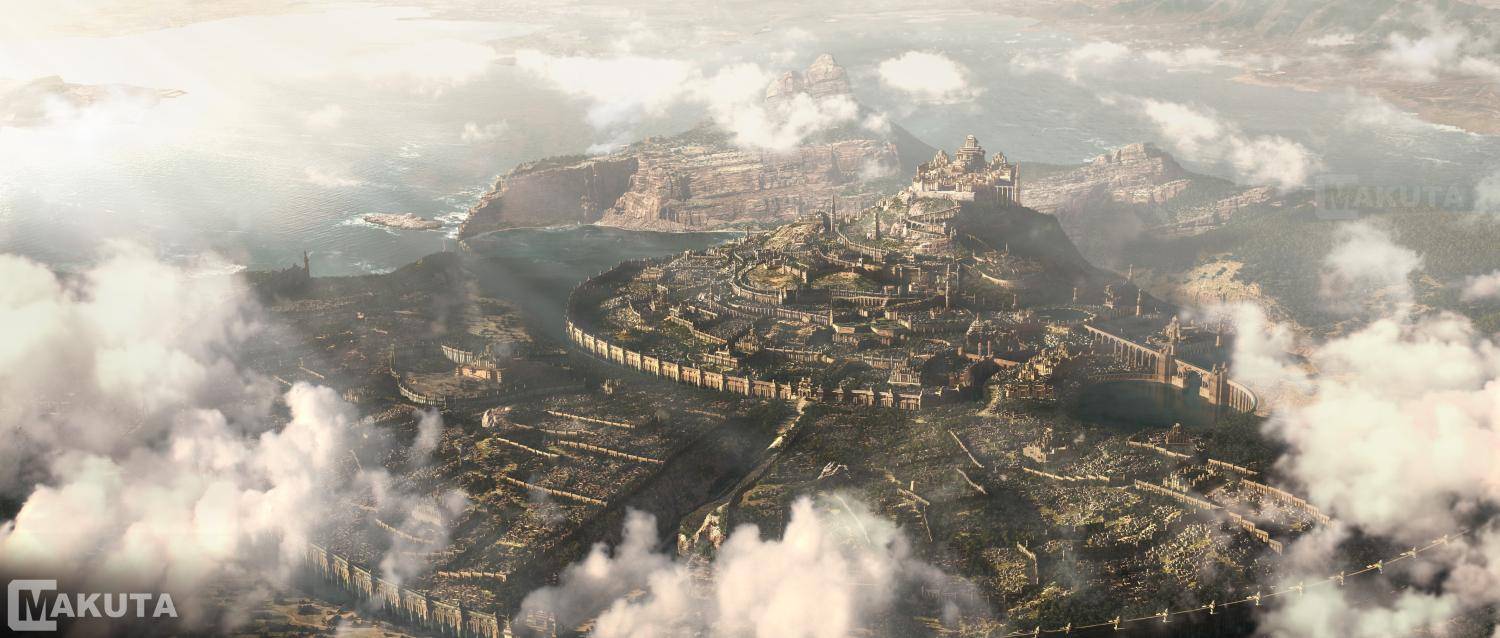
The Forest Pack distribution map option is incredible and for the city, this option was heavily used. Working within realworld units, there were over 400 unique building structures and over 50 varieties of plants, all of which we distributed throughout the city using Forest Pack. By planar projecting a render of the city generated a topography and the flexibility and control to manage all kinds of distribution within the city. From there, we hand-painted the 30 unique distribution maps which we then fed into Forest Pack to distribute the properties. All distribution maps were 10K which allowed us to do the finest detailing within the city to ensure objects were precisely placed along roads and lanes.
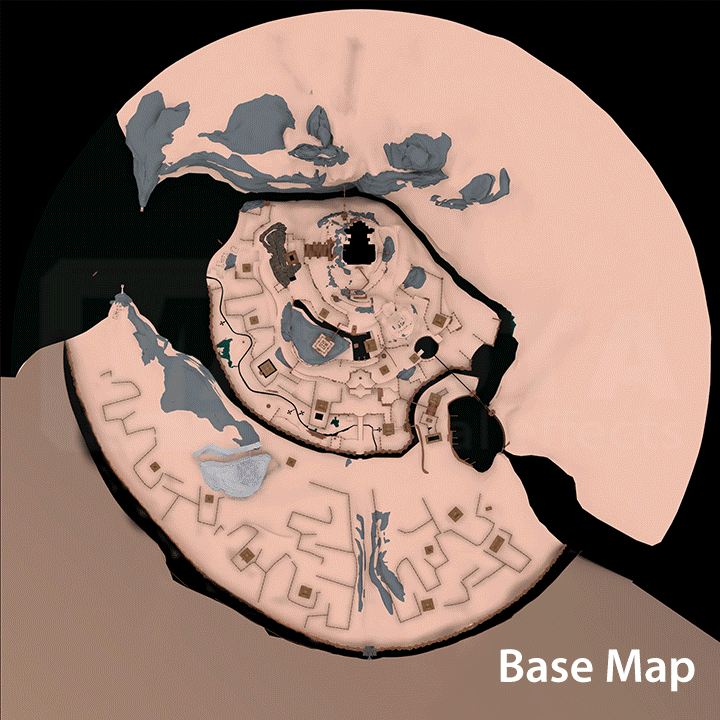
Mahesmati City, featuring Forest Pack distribution maps
Mahesmati Palace
At the heart of Maheshmati City sits the main palace area. This area consisted of three main buildings, the King’s Palace, the Queen’s Palace and the Main Temple, all of which sit once side of a large quadrangle area. All of the building areas along with the central area had to be decorated with long and thin palm trees, mango trees, small shrubs and bushes. There were so many places where the foliage had to be placed. The main focus was not only the intricate structures of the buildings within the palace and the palace itself but the beautiful foliage covering it within.
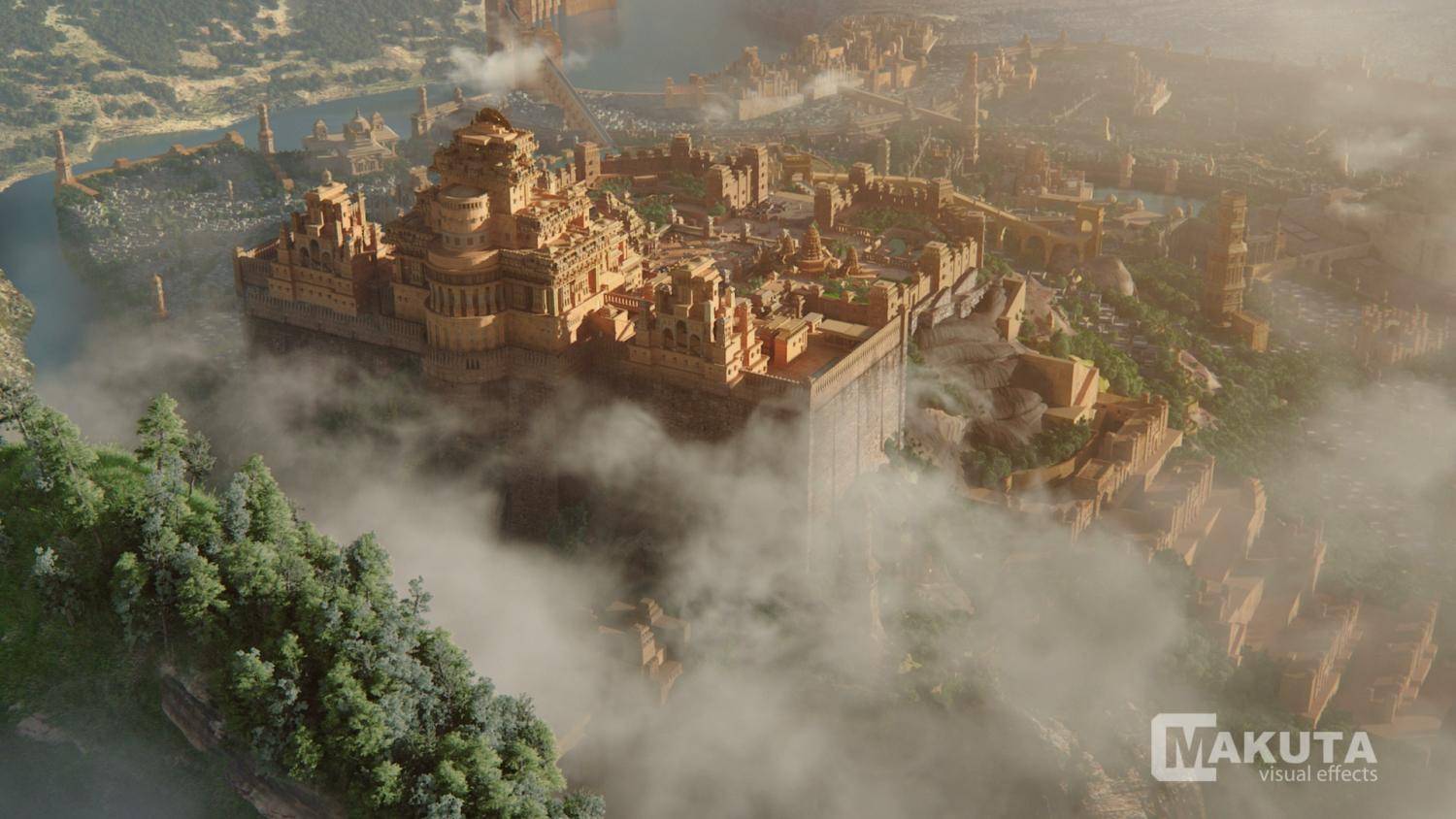
The palace and the city areas proved more of a challenge in selecting the foliage, as opposed to how to simply fill up an area. What the director wanted was something which would visually aid the grandeur of the palace and complement its scale. We opted for long thin palm trees, which naturally help add scale definition without providing a huge canopy masking the beauty of the architecture. Over 20 species of plants and trees were used in the palace area to give a result of the palace looking royal and dominating its surrounding environment. Forest Pack helped us with distributing and managing the foliage within the complex environment in an instant.
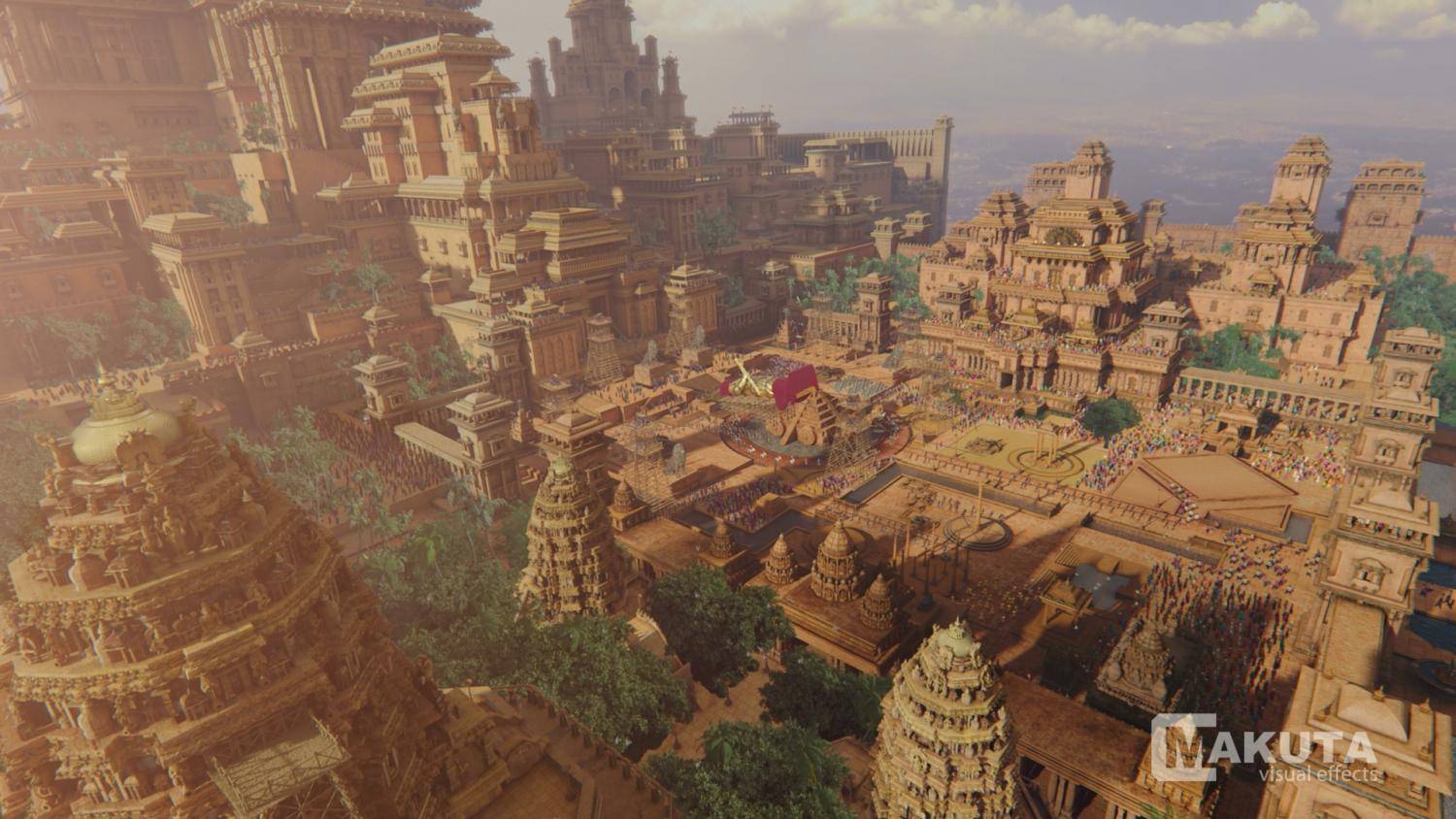
The same challenge presented itself within the city environment only on a much larger scale with a 60Km2 city that we had to populate with numerous items, not only limited to foliage; if it wasn’t for Forest Pack’s distribution system, I’m sure we would still be struggling to populate the city even at this point!
How was Forest Pack able to help you achieve your artistic goals and overcome these challenges? What other tools were used in addition to Forest Pack, and how did they work together?
Forest Pack took us completely by surprise at first. Never had we used a tool of this nature, which was so robust and flexible especially with its ability to distribute numerous objects systematically and with a great deal of control yet having flexibility to add variation, coupling with intuitive Viewport and memory management it meant we could visualise our distributed scene with all items in place without our systems falling over.
Makuta VFX is a 3ds Max and Mental Ray pipeline based studio. For this feature we had to collect so many references primarily by going out to locations for photo and footage shoots to replicate what was used in the live shoot. For Baahubali, we created over 200 species of trees and plants customized for each individual sequence.
What aspects of Forest Pack did you find most useful and why?
The main features of FP we found of most use were distribution maps, the UV surface based generation method, altitude controller and the angle based generation controller. We worked 90% of the movie based on UV Surface generators primarily because we were working with unwrapped and map-based models. We did make use of XY distribution, but only within the Palace area.
Are there any tips and tricks that you can you share with other artists?
Do not limit yourself to thinking how you should use a tool for your work, but how you could use to tool to do more than what it is meant to do. Obviously there are limitations with any tool in the market; we cannot expect Forest Pack to generate crowds like Massive, but we can use Forest Pack to generate static animated crowds which were perfect for our needs for this feature.
Conclusion
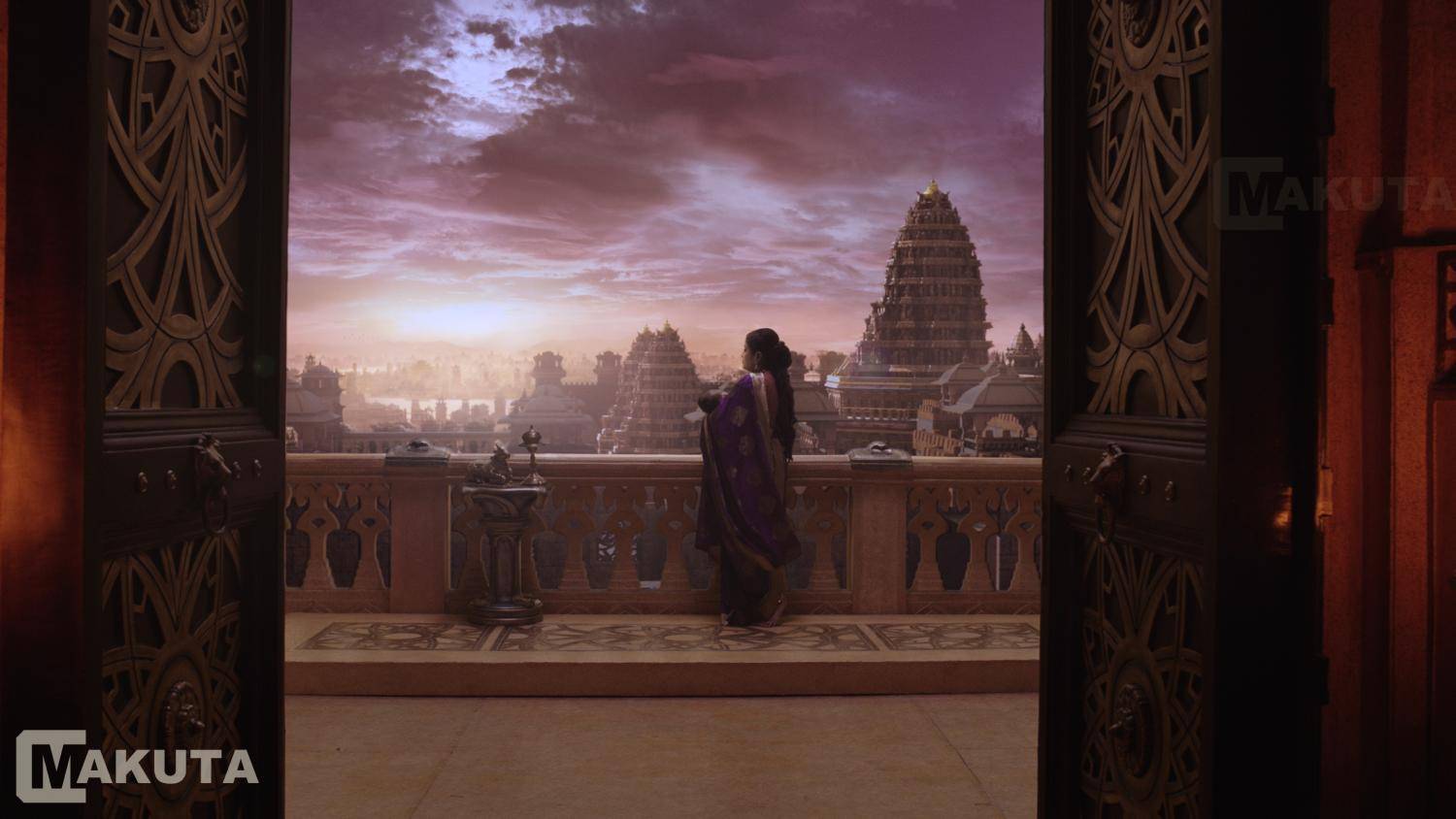
What's the main thing you have learned from this project?
A project like Baahubali, doesn’t come often within Indian VFX market (apart from the second part). We knew the stakes were high and that we had to delivery the quality required. Yes the amount of work involved was staggering, but then its not often you get the chance to work on something that pushes the envelope and thereby raising the bar within your field. This was a project where we could let our imaginations run wild and produce a piece of work that the audience would enjoy. The feedback we’ve received from audiences and peers within the industry both locally and internationally has been both amazing and humbling. We’ve set the bar very high for ourselves, now it’s time to push it higher.
For those that are interested in working with you, what does it take to be a “Makutan“?
There are so many elements to being a “Makutan” however the main one though would have to be creativity and thinking outside the box. When working on any project regardless of size, prestige or budget, we always ask ourselves how can we show the audience something in a way that is new and unique.
What's next for Makuta VFX?
Bahubali - The Conclusion. It’s going to be bigger, better and a lot more complex than the first! We welcome any feature that would assist us to push things further and let us have a crack at awesomeness.
Has using Forest Pack changed the way you’ll tackle future projects?
Obviously Forest Pack is now our go to product when it comes to distributing anything anywhere. And needless to say FP will be extensively used in ‘Baahubali – The Conclusion’ as well.
